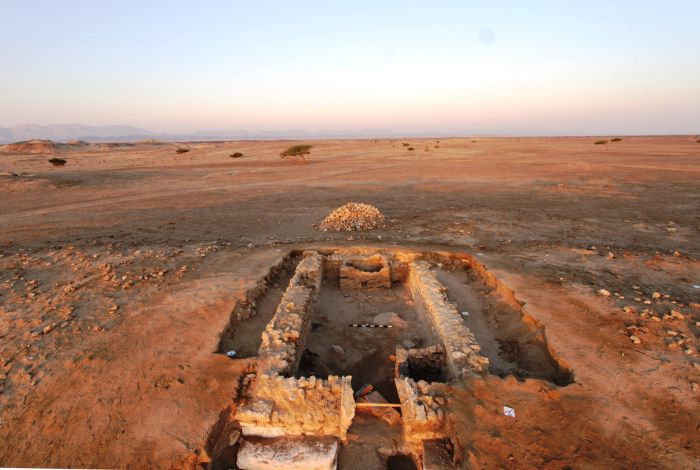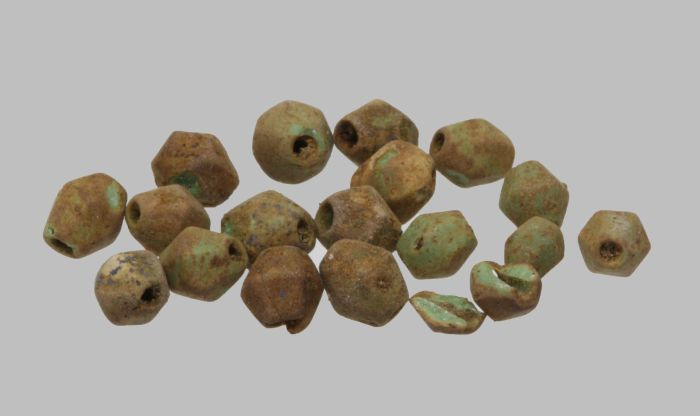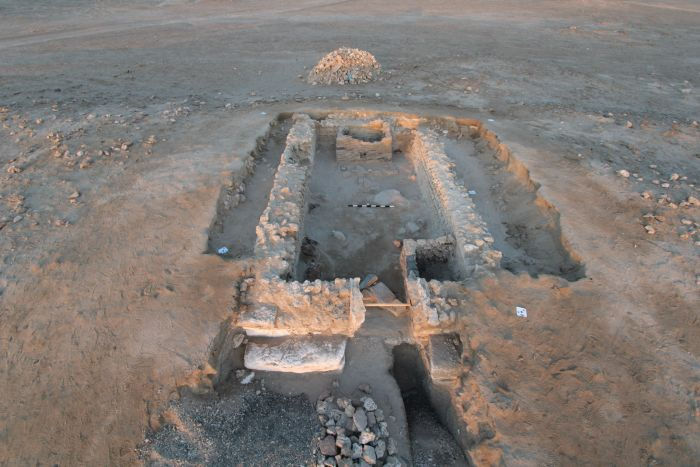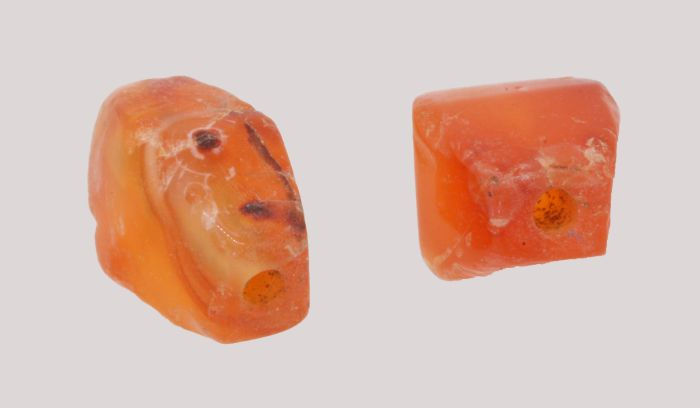Conny Waters – AncientPages.com – Archaeologists excavating in the city of Berenice Troglodytica, an ancient seaport of Egypt on the western shore of the Red Sea, have found a 1,500-year monumental tomb that contains unusually arranged skeletons. The grave is also filled with many beautiful artifacts.
After opening the tomb, researchers report they saw skeletons that looked as if the ᴅᴇᴀᴅ were buried in a huddled position – the bones of the lower limbs resting on the chest.

View of the examined tomb. Credit: M.G Gwiazda / CAS
“This is not a natural position. In order to achieve it, the deceased had to be bound with ropes or tied with cloth,” research leader Dr. Mariusz Gwiazda from the Center of Mediterranean Archeology of the University of Warsaw told Science in Poland.
The rope was tied around the neck and legs, which caused the body to ᴀssume a crouched position. This type of funerary custom was described in the 2nd century B.C. by Agatharchides or Agatharchus of Cnidus, a Greek historian and geographer who said the tribes of the Eastern Desert practiced it. Perhaps it was similar in this case, Dr. Gwiazda said.
Several of the ᴅᴇᴀᴅ were placed in four layers, one under the other. So far, archaeologists have not been able to determine whether the bodies were deposited at one time or whether they were added to the tomb from time to time.
The archaeologist emphasizes that the tomb was full of various types of equipment, which proves that it belonged to very important representatives of this ancient city. The deceased were buried with beads made from onyx (a silicate mineral chalcedony) and carnelian (a brownish-red mineral) that came from Pakistan, India, and even Indonesia.
For the last journey of the ᴅᴇᴀᴅ, several silver rings, earrings and bracelets made of ivory were also placed in the tomb.
Dr. Gwiazda noted that very similar tomb fittings from the same period are known from Upper Egypt and Nubia. There, this type of burial is called royal.
At that time (from the 4th to the 6th century A.D.), Berenice was inhabited by the Blemians who became independent from the power of other Mediterranean empires. It was a little-known, nomadic Nubian tribe inhabiting the mountainous Eastern Desert. However, it controlled territory east of the Nile from present-day Ethiopia to Berenice at the time in question. The authorities administered the city and enriched themselves thanks to participation in trade between the Byzantines and communities living in the Indian Ocean region.

Beads discovered inside the elite tomb. Credit: M.G Gwiazda / CAS
“The burial customs of the Berenice community have so far been shrouded in mystery. We wanted to fill this gap,” Dr. Gwiazda added. Researchers had good luck with this discovery because the tomb turned out to be unplundered, which is rare in Egypt, especially in the case of elite burials.
As part of the above-ground part of the tomb, next to the chest with human remains, archaeologists discovered traces of ancient funeral rituals.

Tomb – on the right in the lower corner there is a chest in which there were seven ᴅᴇᴀᴅ. Credit: M.G Gwiazda / CAS
Scientists report evidence of ancient funeral rituals of a platform and animal remains likely used for sacrifices. Several amphoras have also been found upside down. According to the researchers, this means that they were emptied during ritual practices. There were also small water storage bottles similar in form to the Arabs still use today. They are famous because the fluids in them keep the temperature low despite the heat.
Inside the tomb, archaeologists encountered yet another surprise. They found the grave of a mother and a child from the same period. It looks as if the ᴅᴇᴀᴅ were cuddled up into each other, described Dr. Gwiazda.
This is probably not the end of exciting discoveries in this area because the tomb explored last season is adjoined on two sides by structures that are very similar in plan.

Beads discovered inside the elite tomb. Credit: M.G Gwiazda / CAS
“Our latest discoveries show that in the 4th-6th centuries, Berenice was not a provincial port city at all. It was a city with long-distance contacts,”- said Dr. Gwiazda.
For many years, archaeologists working in Berenice have mainly studied Hellenistic and Roman relics found at the site. So far, no extensive research into human cemeteries from these periods has been undertaken. A few years ago, scientists managed to locate a 2,000-year-old animal cemetery in Berenice. Studies of the remains revealed that the then inhabitants of the city brought monkeys from India, which they treated as domestic mascots, and after their death, they buried them on the outskirts of the cities. Dog and cat cemeteries have also been found in the city.
See also: More Archaeology News
The city of Berenice was founded in the 3rd century B.C. by the pharaoh Ptolemy II. In the first century A.D, the Romans who took power over Egypt made the city an important hub for trans-oceanic trade linking Black Africa, the Middle East and India. Initially, the port was used for shipping of African elephants.
Written by Conny Waters – AncientPages.com Staff Writer





